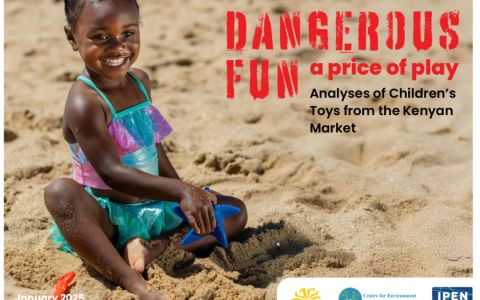People are commonly exposed to lead, cadmium, toxic mercury and other heavy metals in Czech capital. Lead concentration present in dust is much higher in office and authority buildings, yet in general, the interior heavy metal presence is often a heritage of the past. The analysis, presented during the International Lead Poisoning Prevention Week of Action 2017, was conducted by the Arnika Association in cooperation with the University of Chemistry and Technology in Prague.
Photographs from the press conference, held in the premises of the Metropolitan Authority of the Capital City of Prague, may be found in the photo gallery.
The pollution source is, in particular, the room furnishing, lead containing construction materials and lead and cadmium containing paints. Considerable number of Prague public buildings was constructed in the first half of the 20th century and furnished with equipment containing higher levels of lead. Usually, PVC cabel isolation with lead stabilisers are to blame, even lead-based paints and coats are still present. In case of cadmium, the highest values were found in painter studios, where pigments with high cadmium levels are often used.
Toxic lead concentrations in office buildings and in buildings of state or city authorities are ten-times higher than in households. Arnika’s assumption that industrial polluters in the vicinity of sampled buildings are a potential sources of higher heavy metal concentrations, was not approved. The general contribution of industrial sources does not seem to be the major contribution to heavy metals pollution.
Comparing to sandpit
Neither the current Czech, nor the European legislation regulates the presence of hazardous substances inside buildings, although they are commonly present there. Because of that, the measured concentrations were compared with the strict limits laid down in the Decree of the Ministry of Health regulating heavy metal concentrations in children's sandpits.
„We usually spend more than eighteen hours a day in buildings and the limits for kid’s sandpits are among the strictest ones,“ said Karolína Brabcová, Arnika's expert on toxic substances, and continues: „This is of high importance mostly in the case of households, where children behave similarly as in sandpits - move on the floor and often nibble their hands."
The analysis showed that heavy metal concentrations in households and public buildings were comparable in Prague. In several cases, the values for lead and cadmium exceeded more than ten-times the limit values for children sandpits.
„We try to eliminate heavy metals from our lives gradually,“ Petra Kolínská, the Prague Deputy Mayor, commented the results. „However, especially the public authorities should lead the way in demanding toxics-free construction materials, furniture and products they purchase via public procurement. It is a common practice in other EU countries to apply green procurement guidelines that include also environmental criteria of the required service or product,“ added Kolínská. These practices are a major contribution to greater demand for more sustainable goods and services later among private consumers.
Week of Lead Repulsion
The results were published during the International Lead Poisoning Prevention Week of Action taking part from October 22nd to 28th. The attention rising event, co-led by the World Health Organization (WHO) and UN Environment, was established to point out the widespread availability of lead paint, often used on tableware, which is a major source of potential lead poisoning for young children. The International Pops Elimination Network (IPEN) including its Czech member organization Arnika have taken part in awareness-raising activities and other actions during the Week of Action since 2013.
For the research in question, Arnika collected samples from 26 households and 26 public buildings, in order to find out whether the dust inside buildings contained heavy metals. Subsequently, the samples were analysed for the presence of arsenic, lead, cadmium, and toxic mercury, ranked among hazardous substances causing serious health problems, including cancer. The unique investigation was carried out with financial support of the capital city of Prague.
Download the analysis Heavy Metal Concentrations inside Prague Buildings (in Czech)
More on International Lead Poisoning Awareness Week 2017 (UNEP.org)
More on International Lead Poisoning Awareness Week 2017 (IPEN.org)
More on danger hidden in lead containing paints (IPEN.org)







